In the food market in the fall, there are many ingredients that are tubers: Sweet potatoes, lotus roots, yams, radishes... Among them, there is an ingredient called taro that is both delicious and nutritious and can be cooked in a variety of dishes from fried, stir-fried, soup, to cakes... Discover how to cook attractive taro soup with seafood and vegetables, a perfect dish for the fall, helping to moisturize the skin.
Taro contains about 70% starch and is mainly used as food. The starch granules of taro are smaller than those of sweet potatoes and yams, so they have a more delicate taste. Taro is also rich in mucilage protein, which adds elasticity and smoothness to the dish. Moreover, this mucilage protein can produce immune globulin after being absorbed by the human body. Taro is also rich in fiber, calcium, phosphorus, iron, potassium, magnesium, sodium, carotene and vitamin B. In the same weight, taro is more nutritious than sweet potato. Good and nutritious as well as has more intestinal moisturizing effect than lotus root.
At present, taro is available in many markets, if you see it, don't miss it! Today we share with you a new way to cook taro, making the familiar taro soup more delicious and unique. By adding seafood ingredients to cook together, it will increase the deliciousness of the taro dish. And now let's follow the detailed steps to make taro soup with clams and vegetables.
Ingredients for making taro soup cook clams and vegetables
10-12 taro tubers, 2 mustard greens chips, 500g clams, appropriate amount of spices, a little white pepper powder, 2 green onions, 3 minced garlic cloves, appropriate amount of cooking oil.
How to make taro soup cook clams and vegetables
Step 1: Wash the taro thoroughly to remove any dirt from the skin. Then put the taro in a steamer and turn on the stove to steam until cooked. For large taro tubers, you can cut them in half before steaming.

Step 2: Steam the taro for about 10 minutes. Just make sure the taro is about 70% to 80% soft before taking it out. At this point, you can put it in a basin of water to soak for a while to cool it down so that the skin will quickly become shiny. Or you can let it cool naturally and then peel off the taro skin, put the taro flesh in a bowl and use it later.
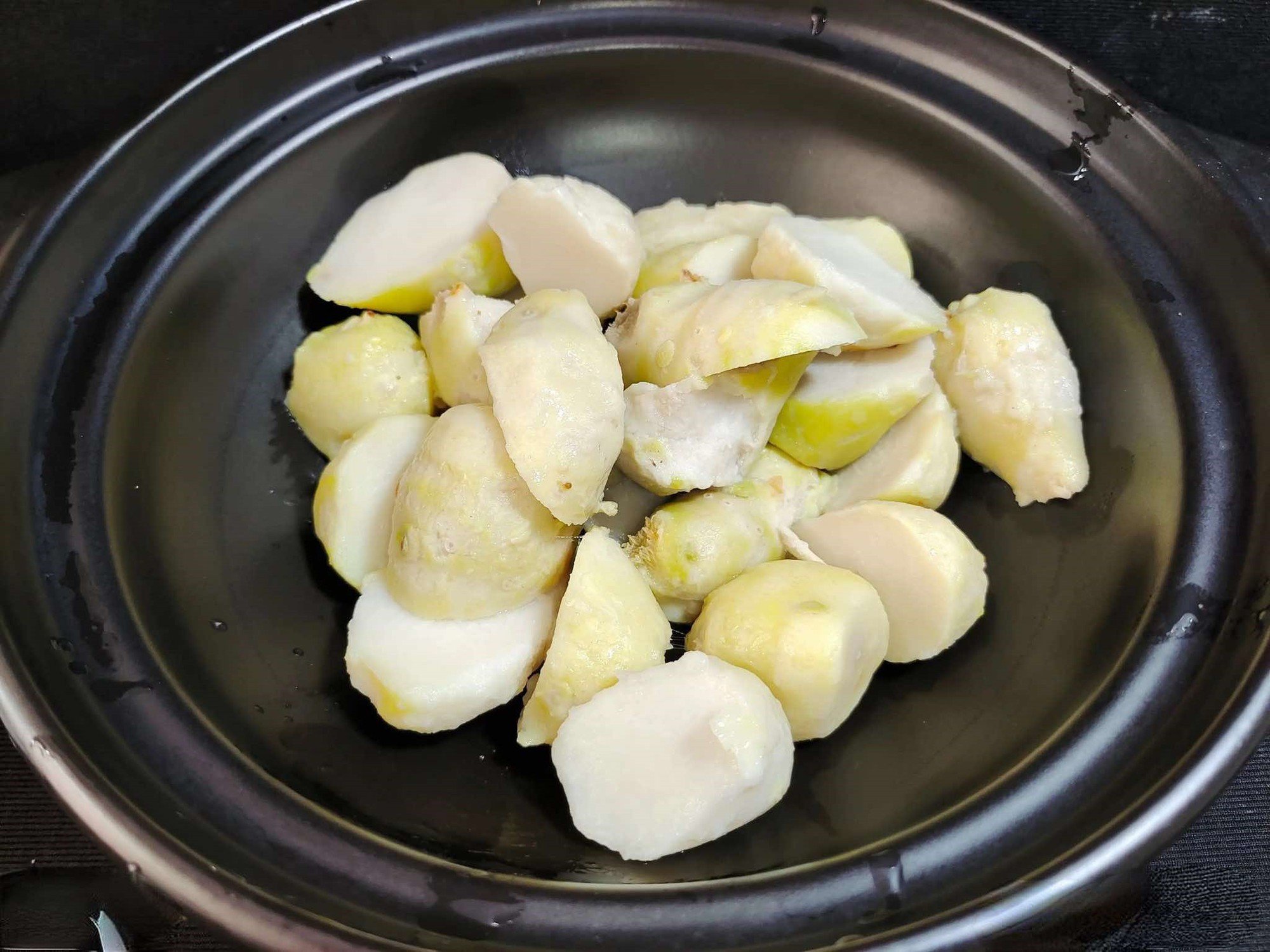
Step 3: Vegetables chip You cut off the roots, separate each leaf and wash it. Wash and chop the green onions. Crush and chop the garlic. Wash the clams, put them in a pot, add the right amount of water and put them on the stove to boil. Boil until the clams open completely, then turn off the stove. Take out the clams, wash each one under the tap to remove all the sand. If you don't like to leave the shells intact, you can pick out the clam intestines and wash them. Boiling water clam friend Put in a bowl to let the sediment settle and use later.
Step 4: Place the pot on the stove, add a little cooking oil and heat it up. Then add chopped green onions and garlic, saute until fragrant. Next, pour in the steamed taro and saute for a while, then add the clam broth, then add a little boiling water to taste. Cover the pot and cook until the taro is soft.
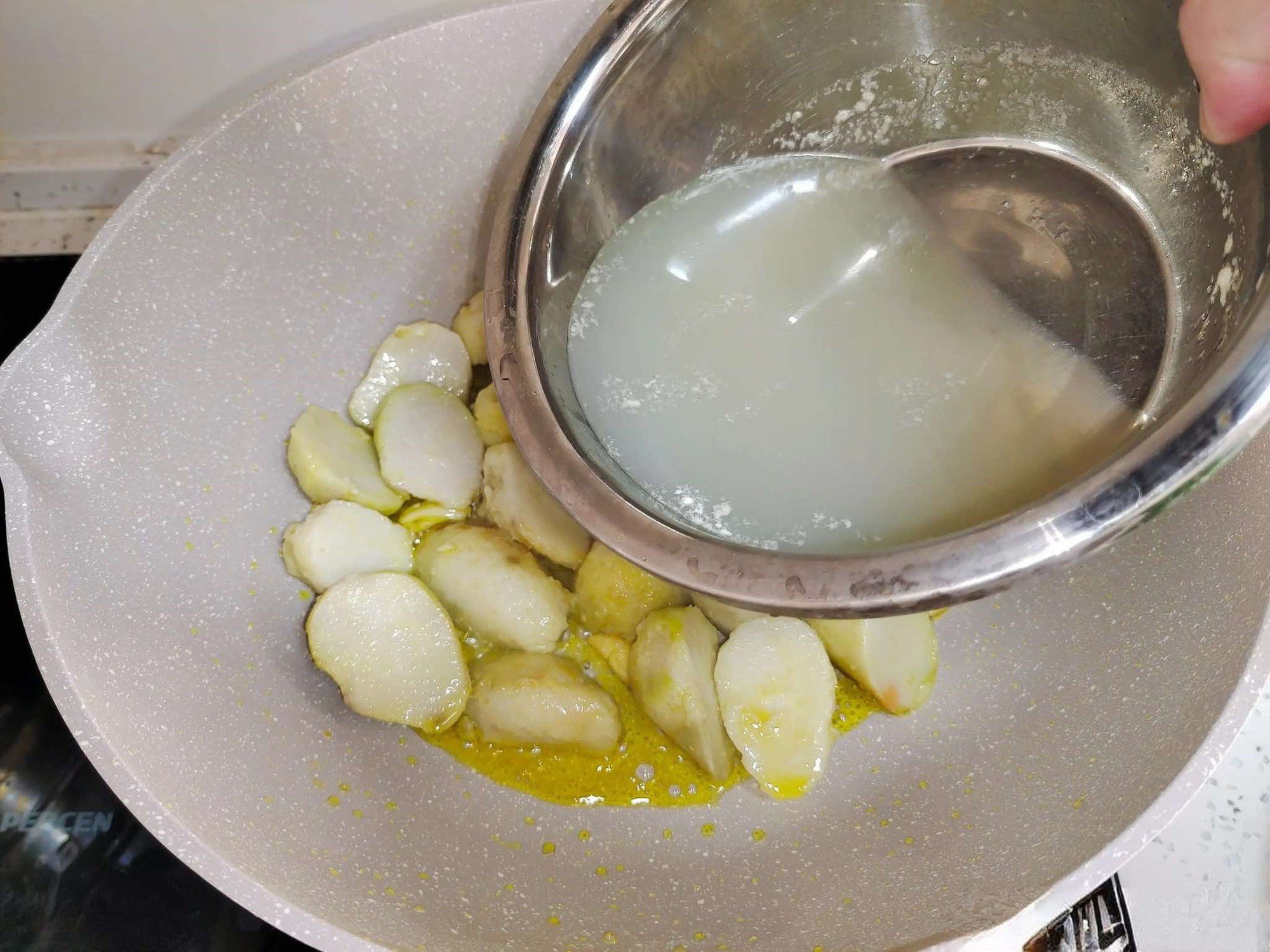
Step 5: Add vegetables and clams to the pot, stir well, then add some spices and white pepper to taste. Keep the heat low and cook for about 1 minute, then turn off the stove and remove the soup from the pot.
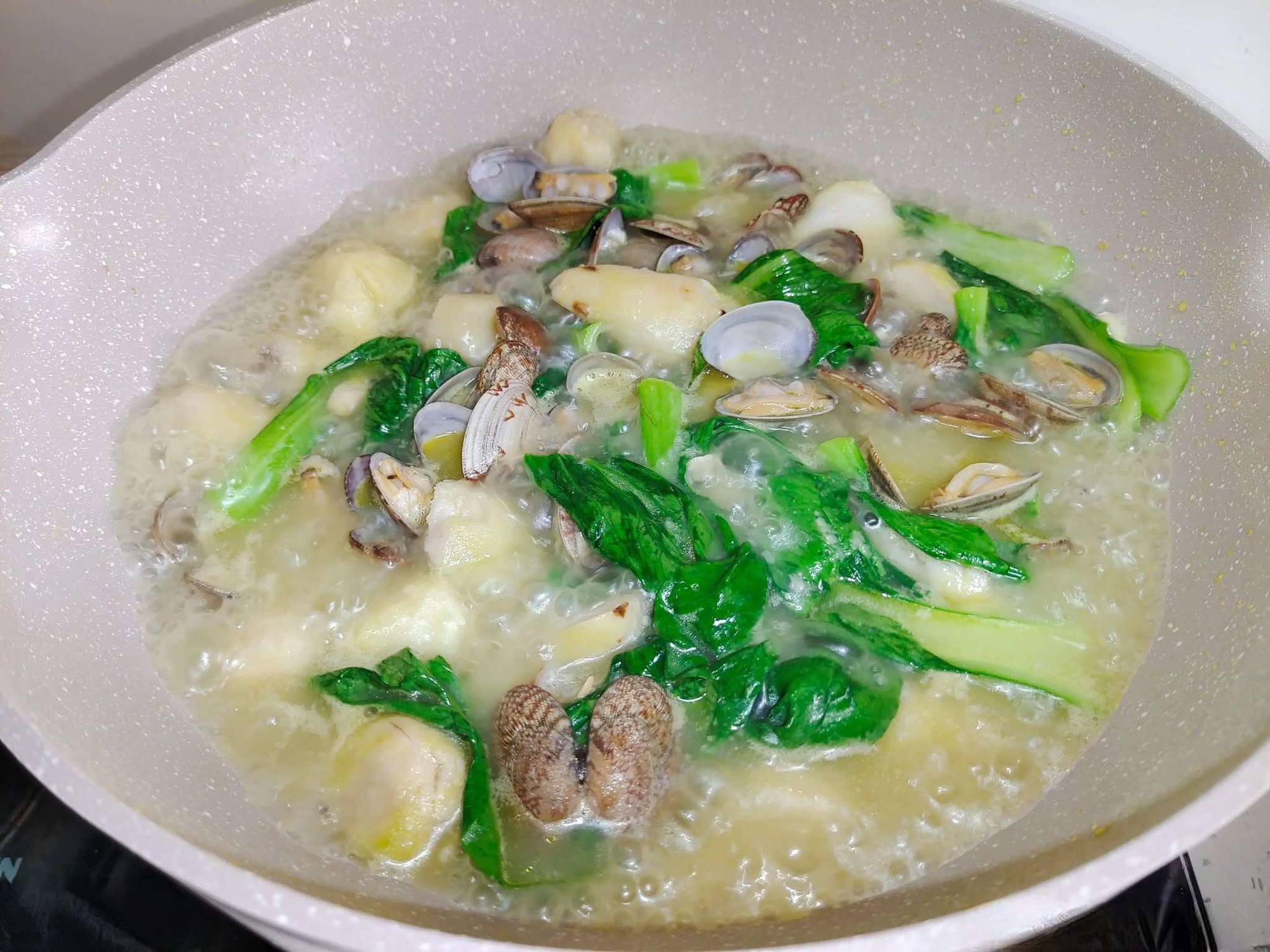
Finished product of taro soup cook clams and vegetables
A very simple and quick dish is completed. Taro is not only delicious but also rich in nutrients, combined with the umami flavor of clams to bring a new culinary experience. The soup has a refreshing taste, sweet and delicious from the water to the vegetables. All blend together to create a very interesting dish with rice. If you want to try a new way to eat taro, you can try this recipe. Everyone is sure to praise it when they enjoy it.
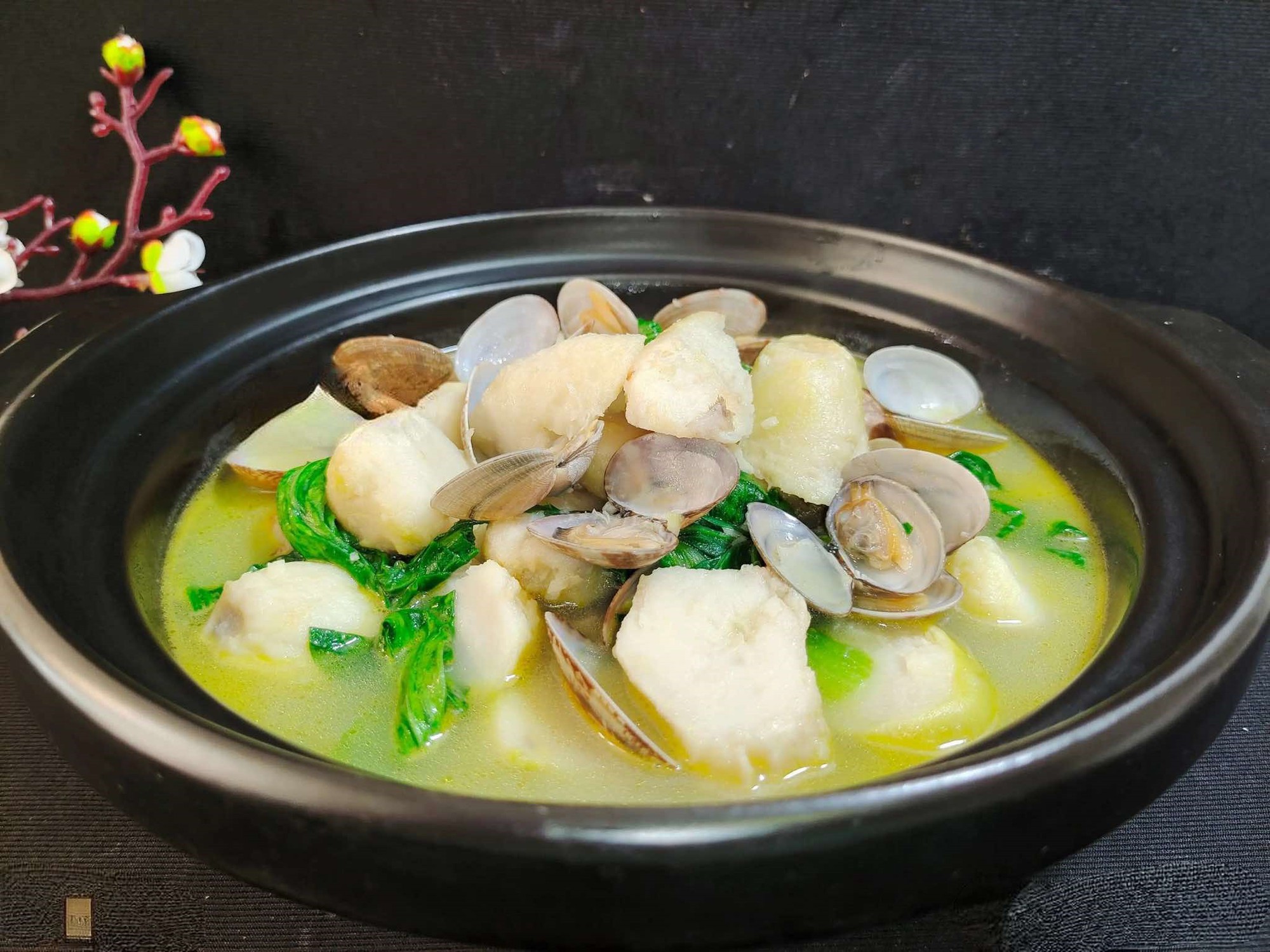
Note:
To better remove the skin of the taro, you just need to steam them until they are about 70 to 80% cooked. Don't worry about the hard inside because we will continue to cook them again until they are fully cooked.
To prevent the clams from having sand residue when eating, we can soak them in diluted salt water for about 1-2 hours. Boiling and then rinsing the clams under running water is also a way to completely remove the sand again. You should let the boiled clam water settle for a while, filter it and then use it for cooking. The clam water is the source of the flavor. umami of this dish.
Source: https://giadinh.suckhoedoisong.vn/ban-da-bao-gio-nau-canh-khoai-so-theo-cach-nay-chua-thu-ngay-vi-vua-mem-thom-lai-co-vi-ngot-ngon-thanh-mat-bat-ngo-172241014091741319.htm








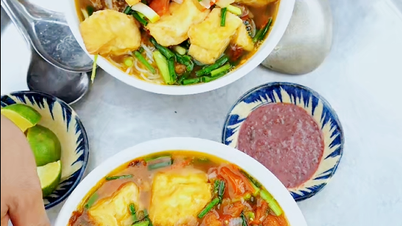

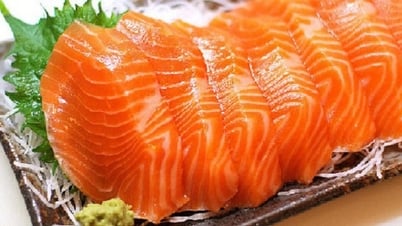



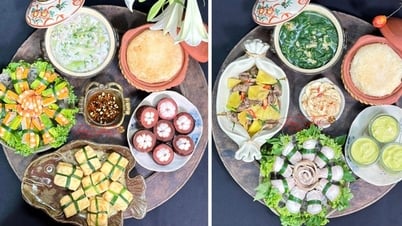




















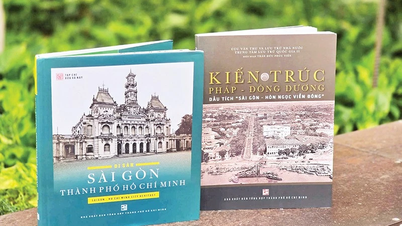

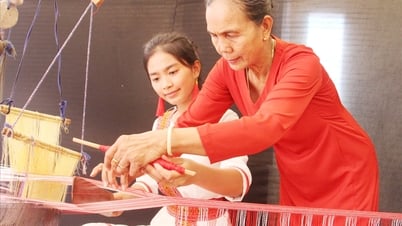



























































Comment (0)